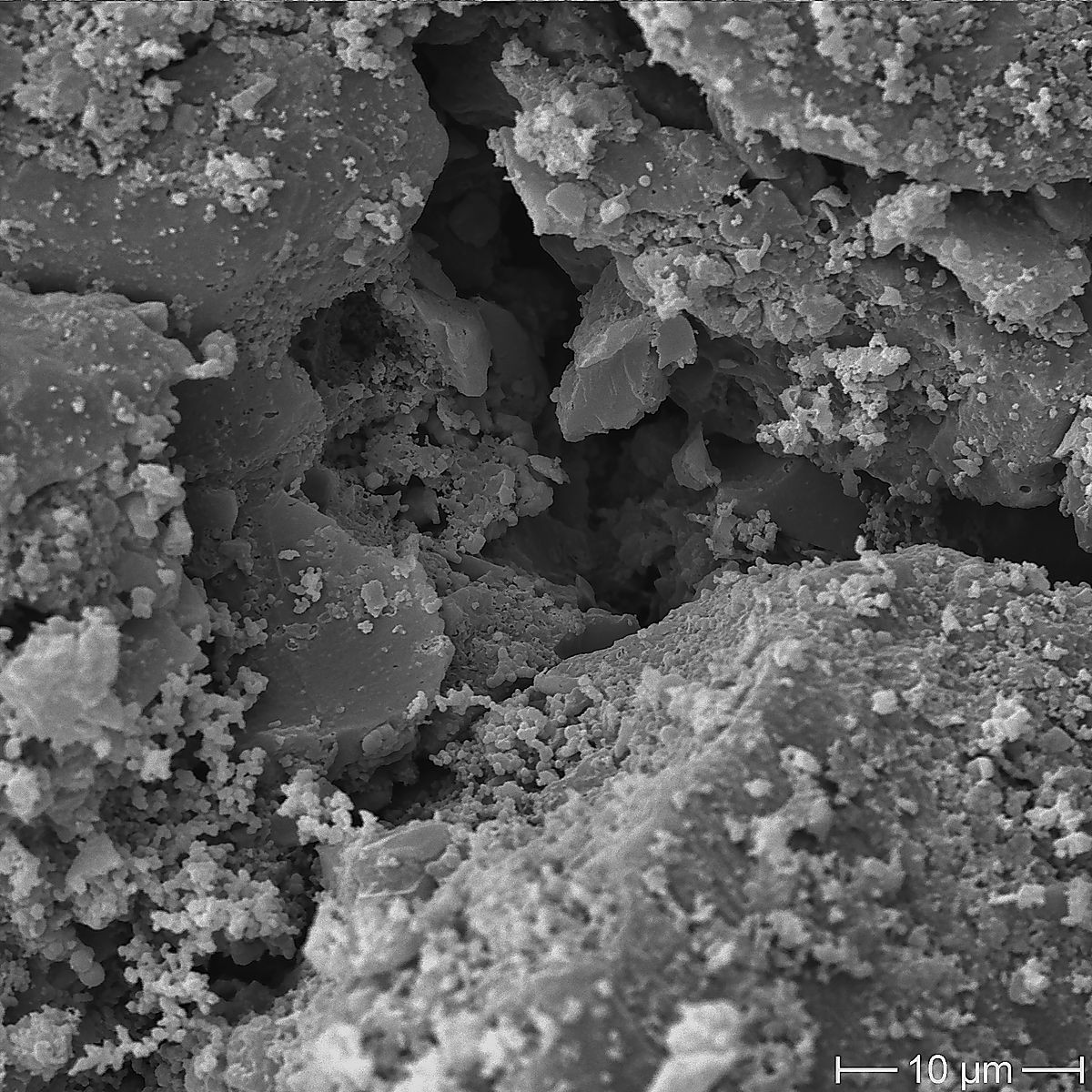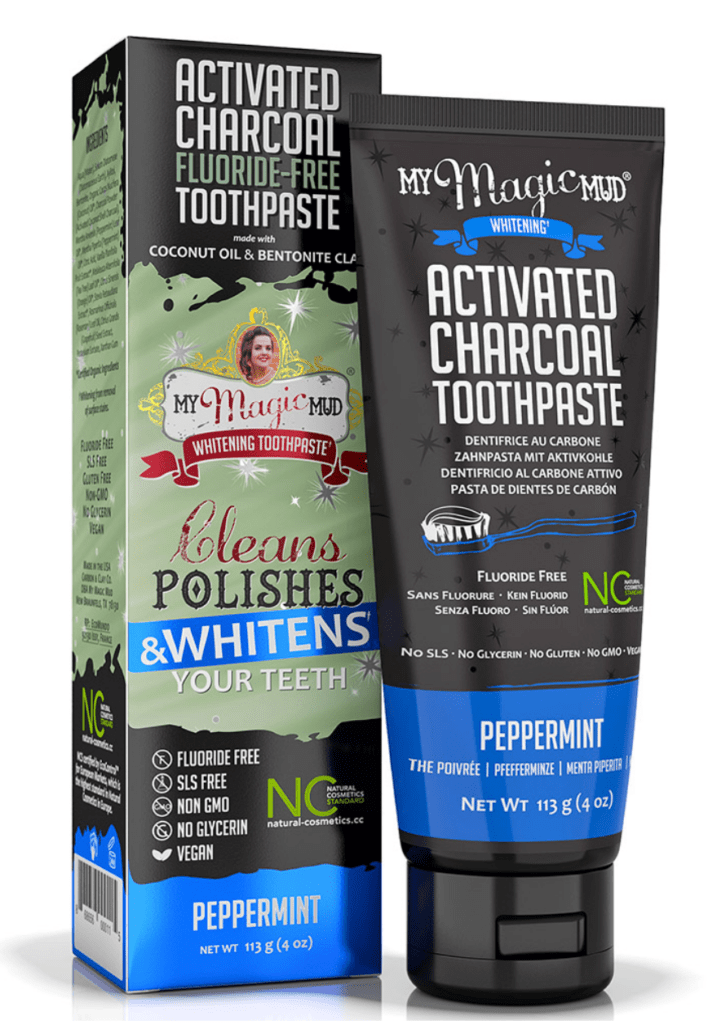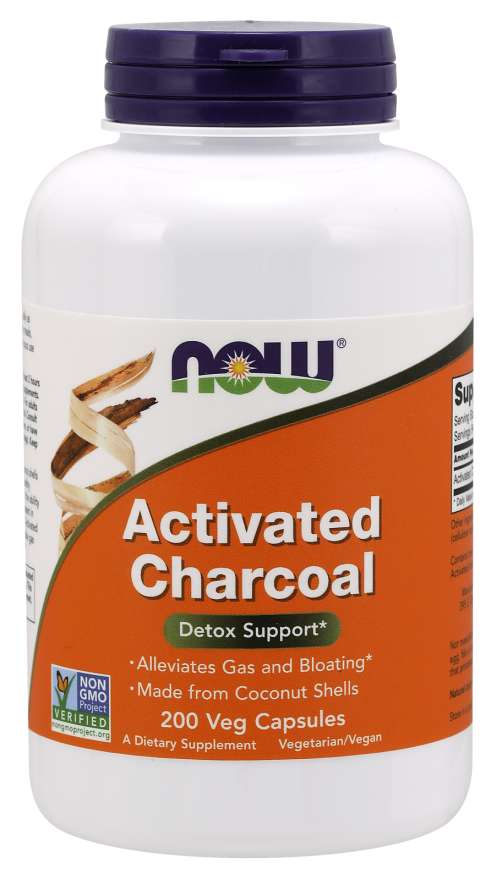Activated Charcoal featured image above is from Mydriatic used under CC BY-SA 3.0 license.
Charcoal has been used since ancient times to prevent poisoning in humans, to purify water, and remove odor. Today it is sometimes used in the ER to treat overdoses and poisonings. In recent years, knowledge of charcoal’s usefulness seems to have resurfaced. Charcoal has been further developed into the product we know today as activated charcoal and its uses broadened. But how does activated charcoal work and how is it made?
Charcoal’s seemingly magically properties largely come from its adsorbent property. Charcoal is able to adsorb other substances, which means charcoal holds other substances on its surfaces, kind of like a magnet. Substances adhere to the surface of charcoal.
Modern activated charcoal products have a surface area of about 1,000 meters squared or more… basically it is very, very, very fine powder! Increasing the surface area increases the adsorbent power.
In general, activated charcoal is made by carbonizing and oxidizing, or ‘activating’, carbon rich materials. Activation empties bonding sites. It also reduces pore size and increases the number of holes in each molecule thereby increasing surface area. Overall, activation greatly improves the adsorbent quality. The specific conditions of how the original material is carbonized and activated affects the quality of the end product. Here are two main ways activated charcoal is made.
Physical Activation
Step 1: Carbonization of carbon rich materials by exposing them to high heat.
Step 2: Activation of the resulting char by exposing it high temperatures with carbon dioxide, steam, air or some mixture of oxidizing gases present.
Chemical Activation
This process involves the usage of a chemical agent such as zinc chloride, potassium hydroxide, phosphoric acid or potassium carbonate. Activation and carbonization can happen simultaneously at lower temperatures and result in more porous activated charcoal. However, environmental protection concerns arise from use of the chemical agents.
It is important to know what the activated charcoal is made from when considering internal use and environmental impact. For internal consumption, charcoal made from coconut shells is considered by many to be the highest quality. Overall, AC is made from agricultural ‘wastes’ that are renewable and abundant such as rice husk, wood, jujube seeds, durian peel, corn cobs, coconut shells, walnut shells, banana peels, and many other shells, husks and stems. Bamboo is another option for sustainably made activated charcoal.
Water Purification
Many water purification systems use charcoal, notably the Berkey with its high-grade coconut shell carbon. One could even use charcoal to filter fish tanks!
Air Purification and Deodorizer
Can be used to ‘purify air’ and remove odors. There are AC air filters and cartridges for respirators. Another use is to have bags of charcoal near problem areas like the trash can, bathroom, or pet places.
Bioremediation
Adsorption has proven to be a good way to remove heavy metals, organic pollutants and dyes from water. AC has a lot of potential here!
Skin Care
AC reportedly draws microparticles to the surface of the skin and make it easier to clean them away!
Skin Infection
AC made from coconut shells is used on skin infections to adsorb harmful microbes from wounds.
Oral Health
AC is used in new toothpastes, possibly helping with odor elimination and having an antibacterial effect.
Deodorant
Using AC as an ingredient in deodorant can help keep one’s armpits smell free!
Kidney Health
By removing undigested urinary toxins and other waste products, AC could aid kidney function and help kidney disease.
Intestinal Gas
Research has shown that AC can reduce excessive intestinal gas.
Poisoning and Diarrhea
This is up for discussion, but AC could be a possible treatment for diarrhea given its ability to adsorb in overdoses and poisonings. To work AC must be taken within 1 to 4 hours of ingesting a toxin. One should never try to treat poisoning at home.
The information provided on this site is intended for your general knowledge only and is not a substitute for professional medical advice or treatment for specific medical conditions. You should not use this information to diagnose or treat a health problem or disease without consulting with a qualified healthcare provider. Please consult your healthcare provider with any questions or concerns you may have regarding your condition.
Web Sources
Huizen, Jennifer. “Activated Charcoal: 8 Uses and What the Science Says.” Medical News Today, MediLexicon International, 27 July 2018, https://www.medicalnewstoday.com/articles/322609.php#medical-uses. Featured image also from this link.
Tadda, Musa Abubakar & Ahsan, et al. (2016). A review on activated carbon: process, application and prospects. 2. 7-13.
Alkhatib, Ahed J and Zailaey, Khalid Al. (2015) MEDICAL AND ENVIRONMENTAL APPLICATIONS OF ACTIVATED CHARCOAL: REVIEW ARTICLE. European Scientific Journal, 11. fetched from URL
URL - A thesis on activated charcoal research.
URL - Berkey Water Filter Systems.



